Living in the Shadow of Fracking
After Her Daughter Gets Sick, a Mother Fights to Protect Her School from Fracking
 Jane Worthington is an impassioned, articulate, and fiercely focused parent. A nurse working two jobs, she’s also raising two children on her own. Alexis is 12 and her brother Damien is 10. Part time, she looks after dementia patients and during the day she runs what she calls the “oil and gas program” for a hotel in her small town, located southwest of Pittsburgh. Her position requires her to promote the hotel and its hospitality services to oil and gas workers. Because she’s become a locally well-known anti-fracking activist, her boss has made clear that she cannot talk about her “outside work” while at the hotel. It seems she and her supervisor have reached an understanding – a kind of good-natured “don’t talk, don’t tell” détente. “But workers do talk to me,” she admits. “They’re worried, too.” Chuckling about the irony of her day job, she shares that her boss reminds her from time to time that they don’t need any “oil slicks” – meaning messy situations — in the hotel lobby. “I make it work, she assures. “It’s a good job and we need the money.”
Jane Worthington is an impassioned, articulate, and fiercely focused parent. A nurse working two jobs, she’s also raising two children on her own. Alexis is 12 and her brother Damien is 10. Part time, she looks after dementia patients and during the day she runs what she calls the “oil and gas program” for a hotel in her small town, located southwest of Pittsburgh. Her position requires her to promote the hotel and its hospitality services to oil and gas workers. Because she’s become a locally well-known anti-fracking activist, her boss has made clear that she cannot talk about her “outside work” while at the hotel. It seems she and her supervisor have reached an understanding – a kind of good-natured “don’t talk, don’t tell” détente. “But workers do talk to me,” she admits. “They’re worried, too.” Chuckling about the irony of her day job, she shares that her boss reminds her from time to time that they don’t need any “oil slicks” – meaning messy situations — in the hotel lobby. “I make it work, she assures. “It’s a good job and we need the money.”
Jane’s day job, like other jobs in the area, exists because fracking came to western Pennsylvania. Fracking does create some jobs, both direct jobs and jobs that spring up to support the presence of the industry, like Jane’s. The job creating aspect of fracking is part of the equation, and it has to be part of the dialogue, but slick public relations people and heavily funded lobby groups have inflated the impact of jobs on the local community while successfully cloaking, almost entirely, the serious health and environmental risks. Jane and her children’s personal experience with the impacts of fracking underscore this fact in a crystal clear way.
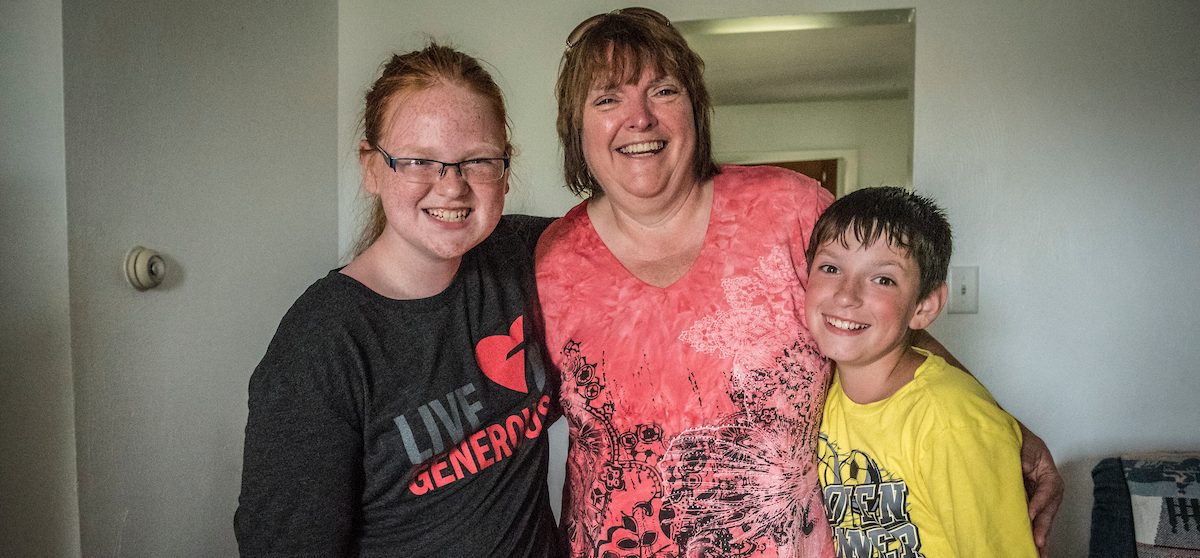
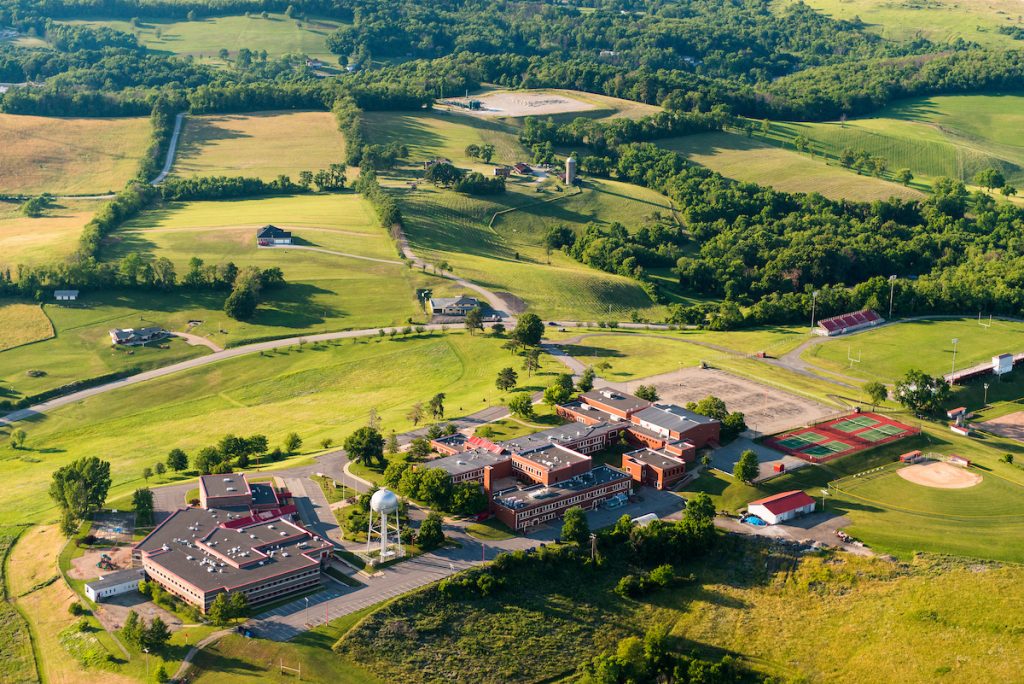 Standing atop the hill where her kids attend school, the Fort Cherry School in McDonald, Pennsylvania, it’s difficult to reconcile the peaceful, panoramic views that the location affords with the tone and tremble that overtakes Jane’s voice as she shifts toward more serious discussion. The morning is cool and breezy, and because it’s summertime, the grounds are quiet, in repose, as though what remains of the natural landscape awaits, musingly, for her to speak.
Standing atop the hill where her kids attend school, the Fort Cherry School in McDonald, Pennsylvania, it’s difficult to reconcile the peaceful, panoramic views that the location affords with the tone and tremble that overtakes Jane’s voice as she shifts toward more serious discussion. The morning is cool and breezy, and because it’s summertime, the grounds are quiet, in repose, as though what remains of the natural landscape awaits, musingly, for her to speak.
Although Jane has no trouble finding the right words or speaking her mind, she relies in this instance on the power of an ordinary 8 x 10 photo to do her storytelling. It’s a picture – from a few years back – of her daughter’s basketball team.
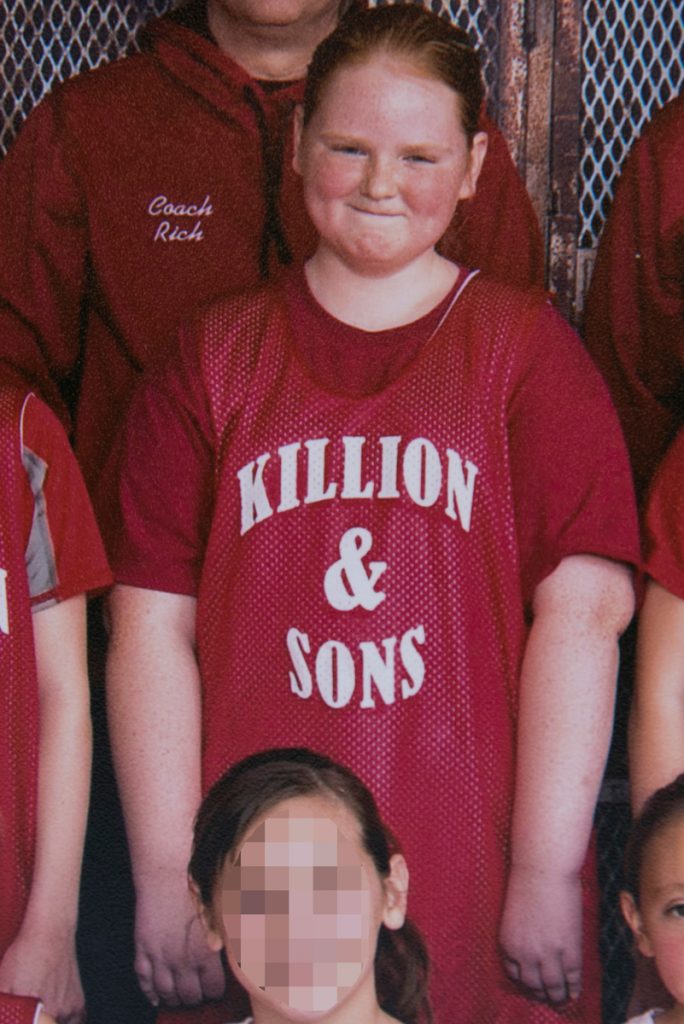 Alexis – Lexi, is tall for her age, fair-skinned, and freckled. She’s standing near the middle of the photo, arms at her sides, red hair pulled back in a ponytail, just like all the other girls. She even has a bit of a smile on her face, which is extraordinary, given the challenges thrust upon her. It looks like any other team photo of elementary-aged kids except for one thing – Lexi’s hands are blue, her fingers oddly curled, and swollen.
Alexis – Lexi, is tall for her age, fair-skinned, and freckled. She’s standing near the middle of the photo, arms at her sides, red hair pulled back in a ponytail, just like all the other girls. She even has a bit of a smile on her face, which is extraordinary, given the challenges thrust upon her. It looks like any other team photo of elementary-aged kids except for one thing – Lexi’s hands are blue, her fingers oddly curled, and swollen.
Her hands were that way because she was exposed to benzene, and her mother is confident that the exposure happened at school, when a nearby well pad was fracked. She is adamant that her daughter isn’t the only child from the Fort Cherry School whose urine has tested positive for benzene but the others, she explains, have “lawyered up” or simply won’t acknowledge the truth because they are either pro-fracking, have leases, or both. For Lexi, the most serious symptoms started more than two and a half years ago, when wells were actively being drilled near the school, but like so many kids living near fracking sites, she also copes with asthma. The pediatrician at the time told Jane that she should be concerned about possible environmental causes. That’s when she started attending Mt. Pleasant Township community meetings, and that’s where Jane first learned about fracking. And the risks.
But a few years later, after the onset of asthma, Lexi began developing a slew of other medical problems, one after the other. She developed big bullseye rashes and eye infections. Her joints were painful and becoming swollen. She tested negative for Lyme disease so her pediatrician next tested for rheumatoid juvenile arthritis while also pursuing other possible explanations. Meanwhile, her symptoms escalated to include frequent, gushing nose bleeds (at school only), unexplained bruising, and discoloration of her hands.
By 2015, though there was some improvement over the summer, when Lexi was at home and not at school, the start of school brought new and worsening symptoms. She couldn’t hold a pencil or bend her elbow. The list grew to include terrible headaches and unquenchable thirst. Jane describes how their local doctor was at a loss, and wrote in Lexi’s medical chart that the symptoms were related to a “thing called ‘fraccing.’” Lexi frequently had to be picked up from school, not an easy thing to juggle for Jane, who was holding down two jobs. She’d meet her daughter in the nurse’s station and over the course of months, she saw “way too many” kids seeking help with nose bleeds. “It just wasn’t normal. None of this was normal,” Jane emphasizes, her eyes turning fiery with exasperation. “But no one would talk about it – no one would talk about the obvious.”
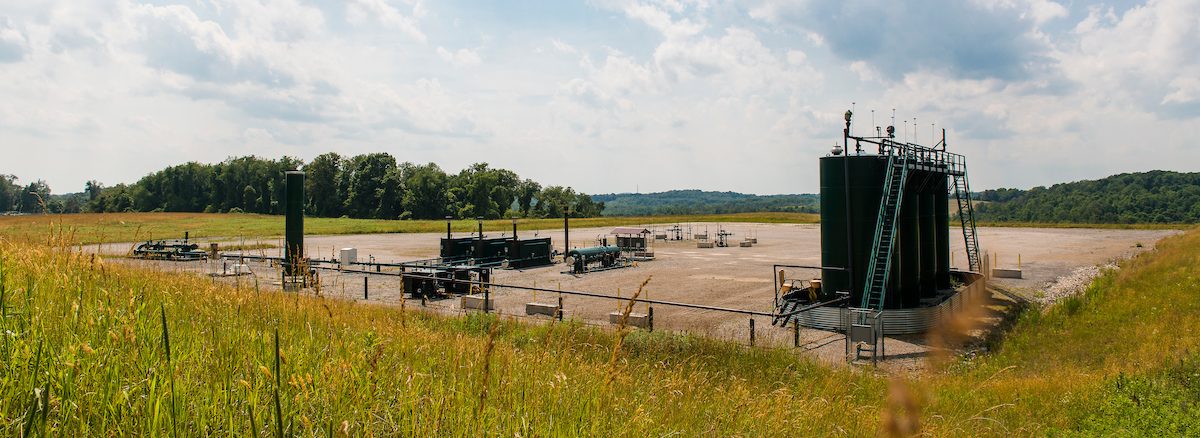
Eventually, Lexi was seen by a toxicologist at the University of Pittsburgh Medical Center’s Presbyterian Hospital, several months after the last well near the school was fracked. Although by that time she had begun to recover, the toxicologist ran a blood and urine panel which revealed that she was still suffering the effects of low level benzene exposure. Records show that Lexi’s phenol metabolite level, a marker of benzene exposure, was more than two times the average of 157 children who were exposed to benzene for 40 days as a result of an uncontrolled flare from a BP petroleum refinery in Texas City, Texas in April and May of 2010. It was estimated that among other chemicals released, these children were exposed to over 17,000 pounds of benzene while BP worked to fix the problem, according to a medical journal article by Dr. Mark A. D’Andrea and G. Kesava Reddy, PhD, published in the Journal of Pediatric Hematology and Oncology in 2014.
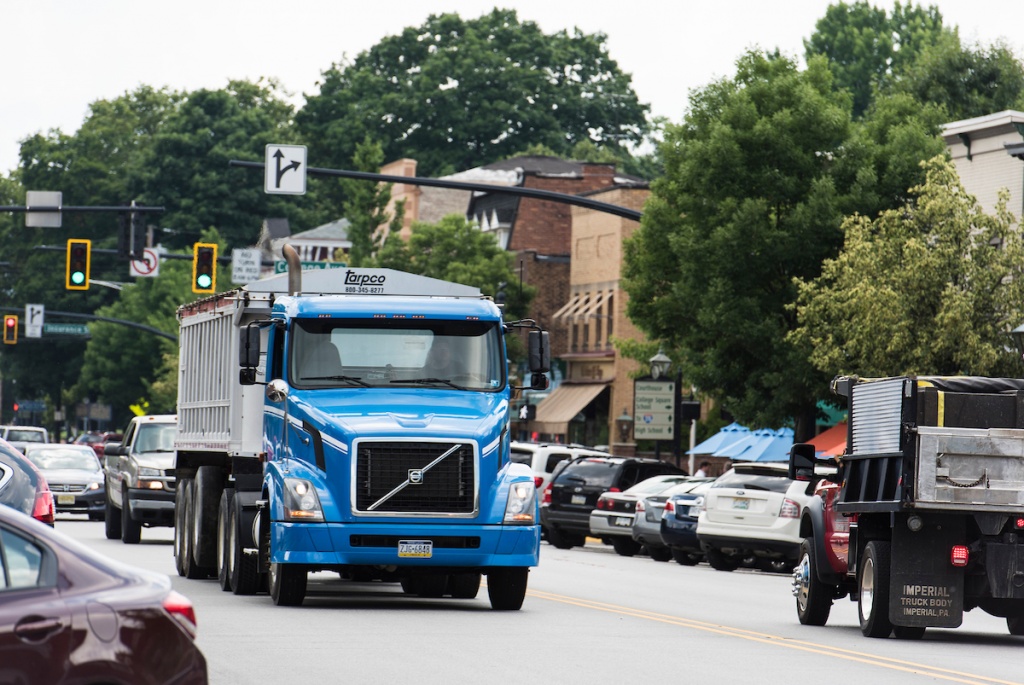
According to Jane, the toxicologist told her that Lexi’s symptoms were “classic” symptoms of benzene poisoning and that with time, and flushing her system of the toxin, she should slowly recover. One way benzene exposure like Lexi’s can occur is when a well is initially fracked and the gas first comes to the surface. If that gas is vented directly to the atmosphere instead of captured and recovered or destroyed with a properly operated flare, those nearby may be exposed to dangerous concentrations of toxic pollutants, such as benzene. The bigger the vent, both in terms of volume and duration, the bigger the potential exposure. Luckily, as predicted, Lexi has slowly recovered.
But dangerous chemical exposure isn’t the only thing on this mother’s mind. “These days, all I can think about is how my children could be standing here [at the school] watching the fire coming to them,” she says, sweeping her arm across what seems a pristine expanse. There are multiple well pads located in close proximity to school grounds – some within a half mile, but they aren’t visible from where Jane stands. Oil and gas companies are skilled at hiding well pads behind hills, berms, or otherwise out of sight line. Like everyone else living in this area of Pennsylvania, Jane has heard about James Baker, a 26-year old man from nearby Salem Township who, in late April 2016, suffered life-threatening burns while trying to escape his home, which melted. His injuries were the result of heat – aptly dubbed “heat thunder” – generated from an explosion that occurred at a pipeline complex owned by Spectra Energy Corporation of Houston, TX. According to multiple news stories, a truck driver picked James up as he was trying to flee. The driver reported that “[t]he heat was so intense that it was burning him [James] as he was running.”
Jane goes on to explain that the school buses are parked off campus, some distance away. If there was an explosion at one of the several wells surrounding the school, there’d be no quick or safe way, from her perspective, to evacuate the children. There is only one road in and out of the school. This scares her, tremendously. She feels that if drilling is going to surround the school, then the well operators should finance the changes to the school property needed to allow the buses to remain on campus when not in use. “It’s the least they can do. They’re playing with our children’s lives.”
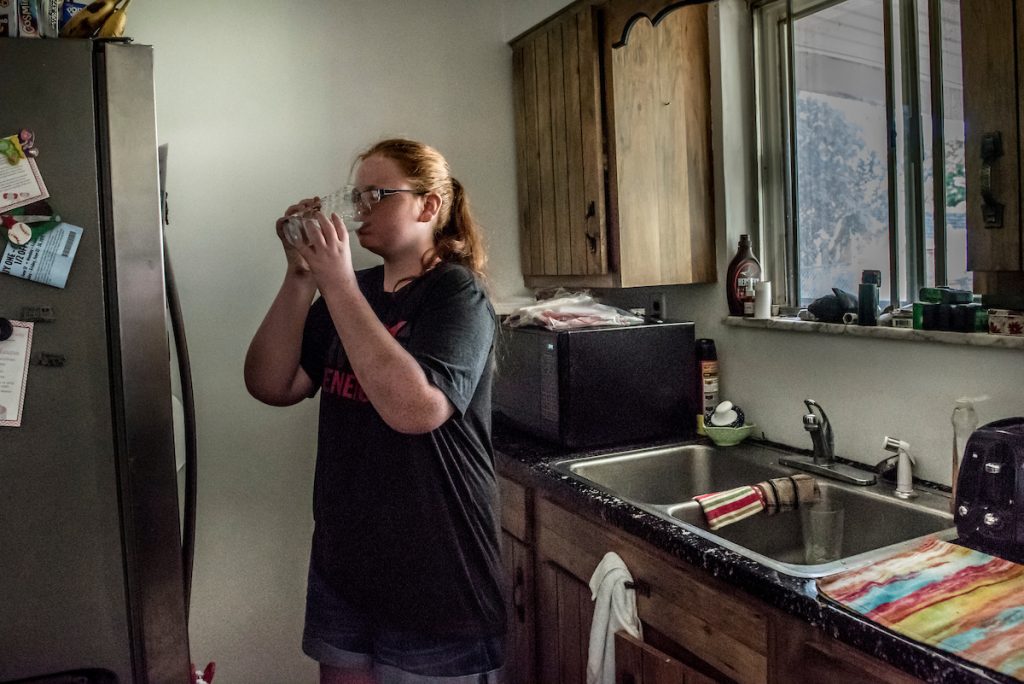 The conversation continues later in the day at Jane’s new home. This time Lexi and her younger brother Damien are present. Apologizing for the mess (though there really wasn’t any), Jane explains that she and the kids have just gotten back from camping, which they do most weekends during the summer. “I like to get them away from all of this,” she sighs, “as much as I can.” The family moved recently to a quieter street to get away from the unhealthy and unending frack truck traffic that interrupted her and her kids’ sleep all hours of the night and they’re still getting settled. “Lexi had a hard enough time sleeping, she was in so much pain, and those trucks never stopped. Even though they weren’t supposed to drive from 7 to 7. You know they did it anyway,” she says, wagging her finger.
The conversation continues later in the day at Jane’s new home. This time Lexi and her younger brother Damien are present. Apologizing for the mess (though there really wasn’t any), Jane explains that she and the kids have just gotten back from camping, which they do most weekends during the summer. “I like to get them away from all of this,” she sighs, “as much as I can.” The family moved recently to a quieter street to get away from the unhealthy and unending frack truck traffic that interrupted her and her kids’ sleep all hours of the night and they’re still getting settled. “Lexi had a hard enough time sleeping, she was in so much pain, and those trucks never stopped. Even though they weren’t supposed to drive from 7 to 7. You know they did it anyway,” she says, wagging her finger.
Her son Damien, who is dark-haired and bright-eyed, is quick to join in, clearly wanting to tell what this experience has been like for him. Unlike Lexi, who is more shy and reserved, Damien revels in the attention. He runs in the back and returns with his favorite baseball bat, bouncing onto the couch as he speaks about sports and his future dream of learning computer coding in college – a goal he shares, by the way, with his sister. But then he turns more serious, veiling his eyes in an attempt to wrangle in more difficult emotions. “She used to cry in her sleep at the old house,” he says, his voice growing small. “I could hear her. She was in so much pain. I couldn’t do anything. And she couldn’t stop being thirsty. She’d wake up and drink three big glasses of water, all in a row.” Eyes drilled into his lap, he briefly glances over at Lexi and offers a knowing smile. “And then a little later she’d gulp some more down, right again.”
Eventually, Lexi joins in. She speaks in a quiet, measured voice about the things she loves to do, how she volunteers as a “cat cuddler” at the local Humane Society, and how she plays point guard on her basketball team and is good at penetrating up the middle to take a shot. Unlike her brother, who is boisterous, impish, and full of movement in that typical 10-year old boy way, Lexi remains glued to the couch, shoulder to shoulder with her mom, for most of the conversation. Tense but still. As she becomes more comfortable however, she begins to open up about her best friends and the toys she likes to collect. She also admits disappointment over the fact that none of her “besties” ever ask her about her health, or talk to her about fracking. “Fracking is idiotic,” she explains matter-of-factly. She then reveals, stream of consciousness style, that she’s afraid to wear white clothes – “just in case I get a nosebleed again,” and that her body “just stopped working.”
 She’s also proud of her mom – who is actually her and Damien’s adoptive mother but also their biological grandmother, and she’s proud that Jane joined a grassroots movement, Don’t Frack the Fort. The purpose of the campaign is to prevent more wells from being fracked so close to school property and to bring greater awareness in general about the risks that fracking poses to the area’s school children. For instance, Jane and other Don’t Frack the Fort members have worked with the local school board to address potential health concerns, and soon, continuous air monitors will be installed on school property. In addition, with their urging, the local school board voted and sent a letter to Mt. Pleasant Township urging local decision-makers to deny or at least postpone approval for another Range Resources well pad near the school.
She’s also proud of her mom – who is actually her and Damien’s adoptive mother but also their biological grandmother, and she’s proud that Jane joined a grassroots movement, Don’t Frack the Fort. The purpose of the campaign is to prevent more wells from being fracked so close to school property and to bring greater awareness in general about the risks that fracking poses to the area’s school children. For instance, Jane and other Don’t Frack the Fort members have worked with the local school board to address potential health concerns, and soon, continuous air monitors will be installed on school property. In addition, with their urging, the local school board voted and sent a letter to Mt. Pleasant Township urging local decision-makers to deny or at least postpone approval for another Range Resources well pad near the school.
Jane is part of a growing movement of parents, homeowners, and small business owners who are beginning to ask their local authorities, as the final gatekeepers of all oil and gas projects, to not simply rubber-stamp operators’ plans but instead take a more reasoned, more transparent, and more comprehensive consideration of the myriad health and quality of life impacts that heavily industrial activities such as fracking bring to rural, farming communities. In Mt. Pleasant, parents have been attending local public hearings and are advocating for greater transparency and more protection for children should the project go forward, including limiting how and when Range would be able to drill and frack the additional well near the Fort Cherry School. These local parents turned activists, including Jane, feel that drilling and fracking at Range’s proposed well pad should not occur during school hours. It is unclear what local government officials will decide, but Jane and her children are bracing themselves should approval be given. Damien and Lexi talk about what it might be like this time if Range fracks near their school again. “Children should never have to worry about whether they’ll be safe at school,” Jane sighs. Waiting to hear, particularly for this family, is difficult, but Jane knows that she and the other parents in this community have done what they can.
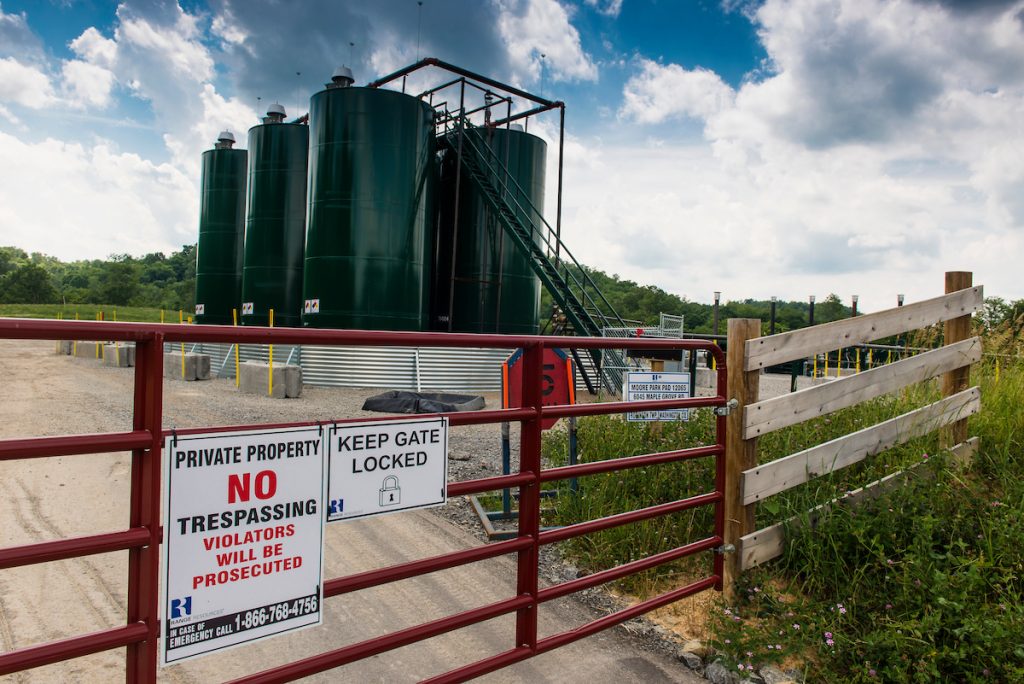 Not surprisingly, Lexi appears to be following in her mother’s activist footsteps. Together, she and Jane, along with members of another grassroots campaign known as Mom’s Clean Air Force, took their message to Washington, D.C. in July. According to Jane, lots of kids, including Lexi, were front and center in meetings with U.S. Senators and other decision makers. Legislative meetings were arranged and these warrior moms discussed, among other things, the importance of making EPA’s new rules to reduce methane emissions from oil and gas operations as strong – and tightly enforced – as possible. Next they’ll be taking their message to Harrisburg, as well. “Someone has to start listening to us,” Jane insists.
Not surprisingly, Lexi appears to be following in her mother’s activist footsteps. Together, she and Jane, along with members of another grassroots campaign known as Mom’s Clean Air Force, took their message to Washington, D.C. in July. According to Jane, lots of kids, including Lexi, were front and center in meetings with U.S. Senators and other decision makers. Legislative meetings were arranged and these warrior moms discussed, among other things, the importance of making EPA’s new rules to reduce methane emissions from oil and gas operations as strong – and tightly enforced – as possible. Next they’ll be taking their message to Harrisburg, as well. “Someone has to start listening to us,” Jane insists.
Jane’s daughter may be shy, but fracking has pushed this Lexi to find her voice. It’s unclear what the long-term consequences of the benzene exposure will mean for her, and her mother is well aware that benzene is known to cause cancer, but for now they both are focused on looking toward a brighter future. Despite her fear of nosebleeds, Lexi found the courage to shelve her anxiety and wear a white dress to her 6th grade graduation. “And I’m really looking forward to moving to the high school,” she continues. The building that houses grades 7-12 is on the same campus, one hill over from the elementary school building. Although still hyper-aware of where drilling and other oil and gas activities occur, she smiles with conviction and explains, “It’s on a higher hill. That means it’s safer.”


